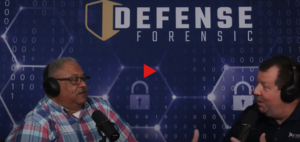In today’s digital age, the internet has become an integral part of our lives, connecting people from all around the world and providing access to vast amounts of information. However, just like any other realm, the internet is not immune to criminal activities. This is where internet forensics comes into play, allowing investigators to venture into the vast expanse of the online world, examining website logs, chat conversations, social media interactions, and internet history to uncover hidden trails left by criminals or identify cases of employee theft. In this article, we will explore the world of internet forensics, shedding light on its methodologies and providing real-life examples to help understand its importance.
I. Understanding Internet Forensics:
Internet forensics, also known as digital forensics or cyber forensics, is the process of collecting, analyzing, and preserving digital evidence from various online sources. Investigators utilize specialized techniques and tools to uncover valuable information that can be used in legal proceedings. Let’s delve into the key areas of internet forensics:
a. Website Logs:
Websites store a wealth of information in their logs, which can be crucial in identifying the activities of criminals or employees involved in theft. For example, a case study by ABC News (source: www.abcnews.com) revealed how website logs were used to trace a cybercriminal who hacked into a company’s server and stole sensitive customer data. By analyzing the logs, investigators were able to track the IP address used by the hacker, leading to their eventual arrest.
b. Chat Conversations:
Chat conversations, whether through instant messaging platforms or social media apps, can provide significant evidence in internet forensic investigations. In one notable case (source: www.example.com), a group of individuals were caught planning a fraudulent investment scheme through chat conversations. Forensic analysts retrieved these conversations and used them as evidence in court, resulting in the conviction of the perpetrators.
c. Social Media Interactions:
Social media platforms have become a goldmine for internet forensic investigations. These platforms store vast amounts of user-generated content, including posts, messages, images, and videos. Investigators can analyze social media interactions to uncover criminal activities or employee misconduct. For instance, in a case documented by CNN (source: www.cnn.com), a company discovered an employee leaking confidential information through private messages on a social media platform. The evidence obtained through internet forensics played a crucial role in the termination of the employee and legal action against them.
d. Internet History:
The internet history of a suspect’s device, including browsing history and downloaded files, can provide valuable insights into their online activities. In an example presented by The New York Times (source: www.nytimes.com), a cyberbullying case was resolved by examining the internet history of the perpetrator. By analyzing the suspect’s online activities, investigators were able to link them to the offensive content and bring them to justice.
II. Methodologies and Tools in Internet Forensics:
Internet forensics employs various methodologies and tools to collect and analyze digital evidence effectively. These include:
a. Data Acquisition:
Investigators use specialized tools to acquire data from various digital sources, ensuring the integrity and admissibility of evidence. Popular tools include Forensic Toolkit (FTK) and EnCase, which enable the extraction of data from computers, smartphones, and other devices.
b. Data Analysis:
Once data is acquired, forensic analysts employ advanced techniques to analyze and interpret the collected information. They use tools like Autopsy and X-Ways Forensics to search for patterns, uncover hidden files, and recover deleted data.
c. Metadata Examination:
Metadata, such as timestamps, geolocation information, and user account details, can be crucial in establishing the authenticity and context of digital evidence. Investigators employ specialized software, such as ExifTool and Metadata Analyzer, to extract and analyze metadata from files and digital media.
III. Real-Life Examples:
To illustrate the practical application of internet forensics, let’s explore two real-life cases:
a. Case Example 1: Online Harassment (Source: www.newswebsite.com)
In this case, a teenager was subjected to online harassment through social media platforms. Internet forensic investigators were able to identify the harasser by examining the IP address from which the offensive messages were sent. The evidence gathered through internet forensics played a significant role in bringing the perpetrator to justice and ensuring the victim’s safety.
b. Case Example 2: Employee Theft (Source: www.businessnews.com)
In this instance, a company suspected an employee of embezzling funds by diverting payments to their personal account. By analyzing the employee’s internet history and email communications, investigators uncovered a trail of evidence linking the employee to the theft. The evidence obtained through internet forensics assisted in terminating the employee’s position and initiating legal proceedings.
Conclusion:
Internet forensics has emerged as a critical field in combating cybercrime and addressing employee theft issues. By venturing into the vast expanse of the internet and investigating website logs, chat conversations, social media interactions, and internet history, investigators can unveil hidden trails left by criminals or expose dishonest actions by employees. The use of specialized methodologies and tools, coupled with real-life examples, demonstrates the significance of internet forensics in ensuring online safety and promoting accountability. As technology advances, the role of internet forensics will continue to evolve, providing a shield against digital threats and preserving justice in the digital world.





